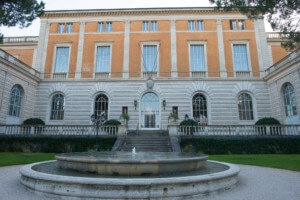This article is part of The Architect’s Newspaper’s “Passive Aggressive” feature on passive design strategies. Not to be confused with “Passivhaus” or “Passive House” certification, passive design strategies such as solar chimneys, trombe walls, solar orientation, and overhangs, rely on scheme rather than technology to respond to their environmental contexts. Today, architects are more concerned with sustainability than ever, and new takes on old passive techniques are not only responsible, but can produce architecture that expresses sustainable features through formal exuberance. We call it “passive-aggressive.” In this feature, we examine three components—diagram, envelope, and material—where designers are marrying form and performance. We also look back at the unexpected history of passive-aggressive architecture, talk with passive-aggressive architects, and check out a passive-aggressive house. More “Passive Aggressive” articles are listed at the bottom of the page!
Michael Meredith is a founding co-principal of MOS Architects, whose work connects the rigor of American formalism with 21st–century biopolitics.
The Architect’s Newspaper: How does sustainability affect form?
Michael Meredith: I would say that in the last few years, formalism went from geometry-as-god to performance-as-god. If Eisenman would say, “The logic of geometry made me do it,” today people would say, “The sun angles made me do it.” It’s a narrative that played out in schools, at least.
What kind of passive design strategies do you use?
Well, a lot of our projects use the chimney effect. We love chimneys, we even gave a lecture on it. The Element House is maybe the most explicit. It is totally off the grid and has about 12 inches of insulation.
But we also implemented it in the Ordos house in 2005, as well as After Party, our MoMA/PS1 Young Architects Program installation in 2008, and some of our other more recent house proposals. It’s one of the most basic units of architecture and acts as a catalyst for both performance and form without a lot of effort, and to great effect.
How do you see sustainability today?
Sustainability has become the new default. It is hard to find anyone who says they aren’t sustainable, although that would be interesting. Nobody would say they’re not sustainable, it’s like saying they’re against ADA. It’s just a requirement nowadays. Maybe we should make a bigger deal about it, we don’t really sell the sustainability thing like some other offices would, but we do use it.
For more “Passive Aggressive” articles, explore: our feature article that features projects from across the world, Bjarke Ingels Group’s own tech-driven think tank, how WORKac’s Arizona House revives the super sustainable Earthship typology, and our brief, unofficial history of recent passive-aggressive design.










